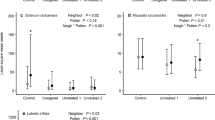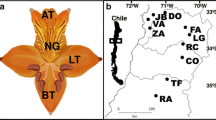Abstract
Many insects and other animals that visit flowers are not mutualistic pollinators, but rather "behavioral robbers" which pierce flowers to extract nectar, and "thieves" which enter flowers in the normal way but provide little or no pollination service. Although the study of floral larceny has grown rapidly in the last two decades, the importance of larceny for individual fitness and for population- and community-level phenomena is only now becoming apparent. Here we synthesize the current understanding of floral larceny by reviewing and re-analyzing existing published data, by presenting new data of our own, and by suggesting avenues of further research. First, we perform a meta-analysis on existing studies, which shows that larceny has an overall detrimental effect on female reproductive success of plants, and that effect size depends on the types of robbers, thieves, and pollinators that interact as well as on the reproductive biology of the plant. This quantitative analysis improves upon a recently published qualitative analysis of larceny and plant fitness. Next, we discuss the possibility that larcenists and pollinators can select in different directions on floral traits, possibly contributing to the standing variation in floral phenotypes that is observed within natural populations. Larceny has the potential to affect plant population dynamics, so long as offspring recruitment and survival depend on seed production, a point we illustrate with data from the montane herb Ipomopsis aggregata. Our studies of this species also show how larcenists may influence community-level dynamics, by linking plant species that they rob or by influencing other plant species through altered behavior of shared pollinators. Population- and community-level effects of larceny, and their possible roles in stabilizing pollination food webs, provide rich prospects for future research.
Similar content being viewed by others
Author information
Authors and Affiliations
Additional information
Electronic Publication
Rights and permissions
About this article
Cite this article
Irwin, R.E., Brody, A.K. & Waser, N.M. The impact of floral larceny on individuals, populations, and communities. Oecologia 129, 161–168 (2001). https://doi.org/10.1007/s004420100739
Received:
Accepted:
Published:
Issue Date:
DOI: https://doi.org/10.1007/s004420100739




